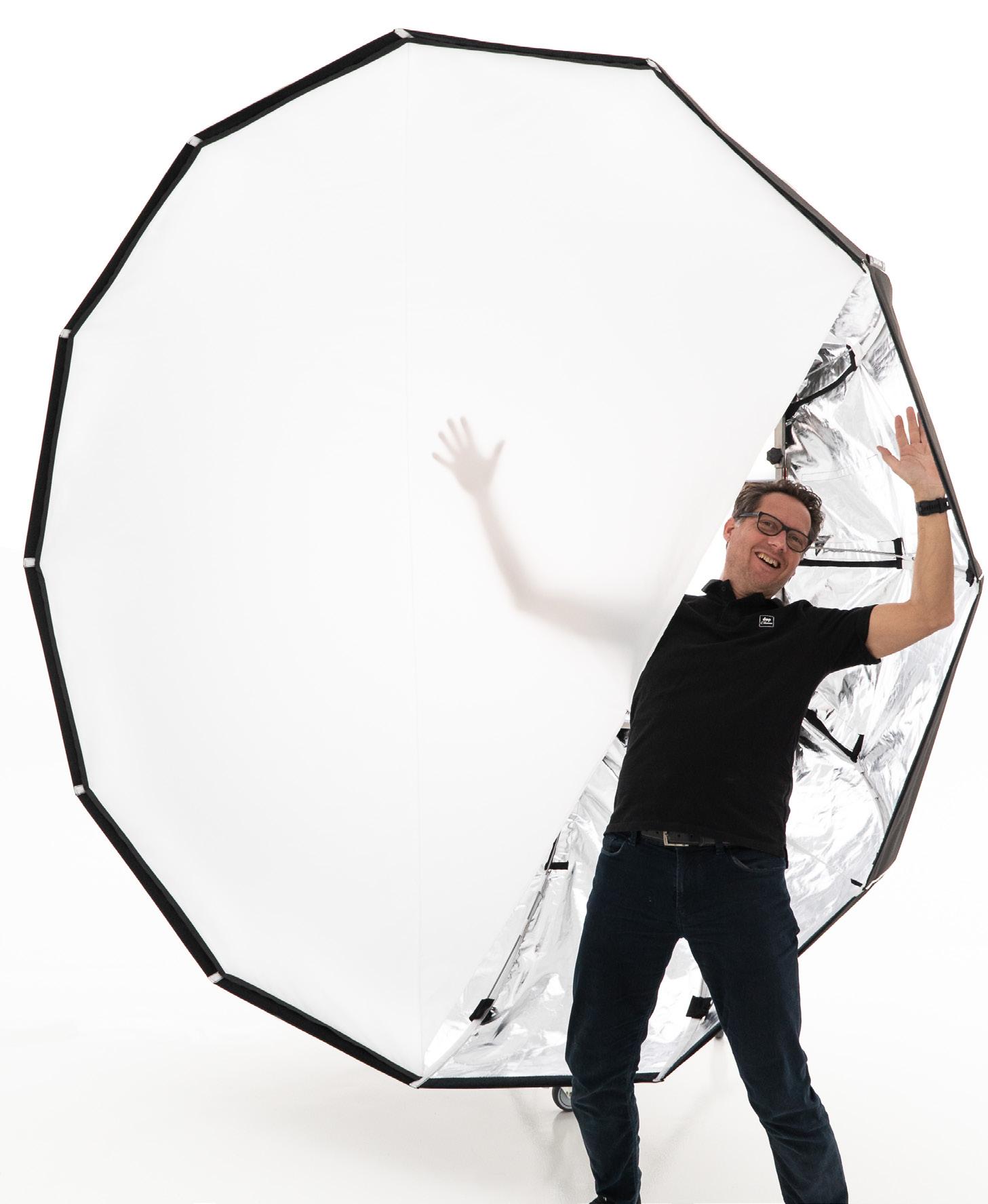
8 minute read
PIOTR NIEMYJSKI PSC JSC•THE PERFECT NUMBER
In The Perfect Number, from acclaimed writer-director Krzysztof Zanussi, DP Piotr Niemyjski PSC JSC faced the challenge of how to make intellectual conversations and existential observations visually stimulating. The film follows David (Jan Marczewski), a young mathematician who has sacrificed his life to researching prime numbers and who begins to re-evaluate his priorities when he meets Joachim (Andrzej Seweryn), a distant and professionally-successful relative.
How to express life’s fundamental inconsequentiality in the grand scheme of things in cinematic terms? How to use light, colour, framing, camera movement and other visual tools to convey the characters’ debates about change, aging and evanescence via meaningful images? How to make often abstract dialogues and monologues about the essence of worldly prosperity, and the importance of loving and being loved, relatable to strangers sitting in dark cinema halls? These are some of the logistical and visual conundrums Niemyjski faced when he prepped the latest feature from the unashamedly intellectual filmmaker Zanussi.
“Collaboration with Mr. Zanussi is one of the most important partnerships of my entire career. If he works on a new film, I’m on board without reading the script, just like most of the crew,” claims Niemyjski who previously shot Zanussi’s Foreign Body (2014) and Eter (2018). “But because he likes long takes and his films are extremely dialogue-driven efforts, where each word has its place and significance, I always feel a rush of panic during prep. Finding the valid visual language, the right rhythm to compliment the words with images, is most challenging.”
The Perfect Number is about a clash of two worldviews. Joachim is an elderly Polish-Jewish sybarite who spent his life being a brilliant businessman and accumulating wealth. When he nearly dies in a bomb attack in Jerusalem, he begins to question his old belief system. Joachim’s belated realisation that any person could not be complete without others at their side makes him contact his only living relative, David, a young and successful mathematician who has pushed back everything and everyone to focus on numbers and equations. Being a purist scientist, David despises chaos and tries to calculate everything in his life, until he also goes through a near-death experience.
The story is related in three modes: Joachim and David’s conversations in various settings; their philosophical monologues that seem to occur beyond time and space; as well as visualisations of anecdotes and parables they use to support their theories. Niemyjski approached each mode with a different mindset.
“Mr. Zanussi wants his films to provide a certain kind of experience, not to be confused with the fast-andfurious way some films are produced nowadays,” says Niemyjski. “Our aim was to make the audience feel included in the arguments of the protagonists, immersed in their dilemmas, and to reflect on the questions they ask themselves.”
DO THE MATH
By Darek Kuźma
During Joachim and David’s meetings, the camera moves or floats around them, framing them from different angles and with new dynamics for each conversation.
“These were mostly long takes shot in real time, creating a sense of participation. The characters discuss complex concepts, but because there are no disruptive cuts, it’s easier to follow their words through long takes,” explains Niemyjski. “I’ve never been a fan Steadicams or Ronins, as they can’t provide me with the degree of control over image that a dolly does. So we used dollies a lot, especially as we wanted to make mathematics part of the film’s visual language, both in terms of framing and camera movement.”
The conversations were shot using ARRI Alexa LF equipped with an Angénieux 24-290mm Optimo Zoom.
“It wasn’t a small camera set-up, yet shooting with a zoom made the complicated dolly work, multiple film planes and different types of movement within the frame, more manageable,” Niemyjski says. “The only thing that sort of went against the way we shot was that using a spherical lens forced us to crop the sensor and lose some of its resolution to shoot in widescreen format. There aren’t many professional lenses that cover the entire Alexa LF sensor and we just didn’t have access to any.”
The second mode – characters monologues about their lives and choices – harnessed Alexa LF, but with different lenses.
“We decided on Signature Primes to cover the whole sensor and use shallow depth-of-field to the fullest. Joachim and David unburden themselves before our eyes but we aren’t sure whether we observe physical human beings or manifestations of their inner struggles,” the cinematographer explanis. “In the script they’re talking about infinity, but how to depict infinity? My initial idea was to shoot B&W in a square format to explicitly isolate these scenes, but I guess it would have been a little too radical.”
For the third mode – handheld visualisations of crucial points in the monologues, which include a poignant anecdote about a revengeful World War II postman – Niemyjski shot with an ARRI SR3 Super16mm camera and Angénieux 28-76mm and 45-120mm zooms, and on Kodak Vision3 5219 500T celluloid film.
“We pushed the 500T two stops over its normal sensitivity to make these fragments as distinguishable as possible from the digital images,” Niemyjski reveals. “In this project, I didn’t want to depict scenes from the 1940s or 1980s on digital, as it would ruin the immersion. We also tested Super 8mm and the results were impressive, but the technology proved too archaic and unstable to accept the risk of using it on the set.”
Every shot took several hours to prep, but even if we managed only two shots per day, it was worth it
The Perfect Number was shot for 28 days in September/October 2021, mostly in the Polish city of Płock, with some parts done in Warsaw.
“I went to Jerusalem with my assistant for a few days, but mainly to shoot footage that would lend weight to the story,” Niemyjski says. “This was a modestly-budgeted indie film, and we couldn’t afford doing it in Israel. The bomb attack in the film may seem like it was shot there, but in reality it was filmed in Szembeka Square in Warsaw as it had sandstone that was close in colour and texture to Jerusalem architecture. We then enhanced it during the grade, done with colourist Ewa Chudzik at WFDiF (Wytwornia Filmow Dokumentalnych), the Documentary & Feature Film Studios in Warsaw.”
As precision was of utmost importance for the conversational parts, and they were shooting long takes, each shot required a lot of consideration.
“Most directors do dozens of camera set-ups to find the rhythm in the editing suite. We also had to adhere to the script’s rhythm, to find the timing, the right combination of camera moves and pauses, to tap into what was already there,” reminisces Niemyjski. “We scouted and tested as much as we could beforehand, but nothing can replace rehearsals with actors on the day. Every shot took us several hours to prep and we did multiple takes to find the right balance, but even if we managed only two shots per day, it was worth it.”
Because of all this, Niemyjski opted for 360-degree lighting.
“Time mattered, but as we worked with meticulously designed long takes we didn’t need to match wide shots, medium shots, close-ups, etc. For nights I primarily used 12kw Dino Lights as they cover a lot of space and give beautiful light that you can shape. We also had a solid HMI package, 6K to 18K, and a range of remotecontrolled Astera Titan Tubes that proved wonderful in small interiors. For day shots, it was mainly HMIs, and a range of Par 64s for scenes where we had to direct diffused light at specific objects or actors’ faces. Nothing special, but enough for what we needed.”
The cinematographer rarely uses filters and gels in his work, trying to be creative with bringing shape and texture through light or colour, but this time he had to change his ways.
“Mr. Zanussi wanted to darken the skies to make them slightly surreal and more cinematic,” Niemyjski says. “After some careful deliberation, we decided to make candle-smoked optical coatings and attach them to our lenses. I have to admit, I wasn’t sold on the idea of such home-made filters, but the results were super cool and
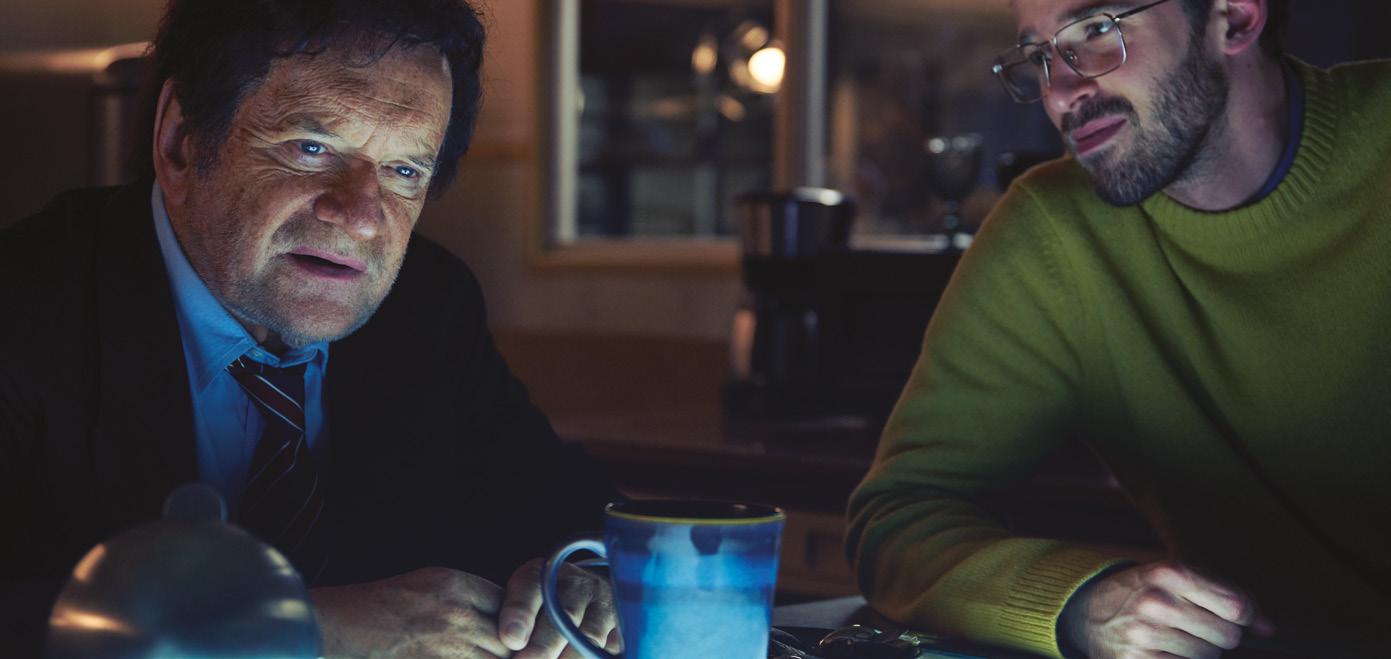
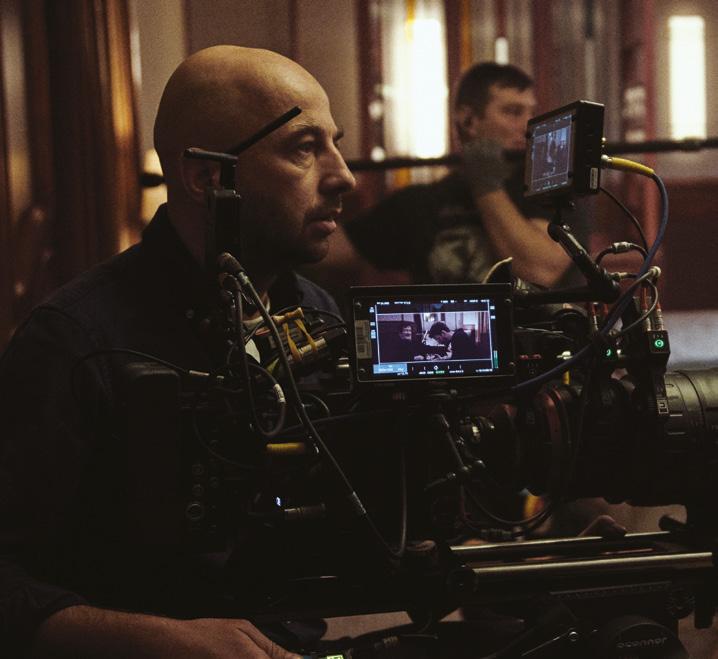
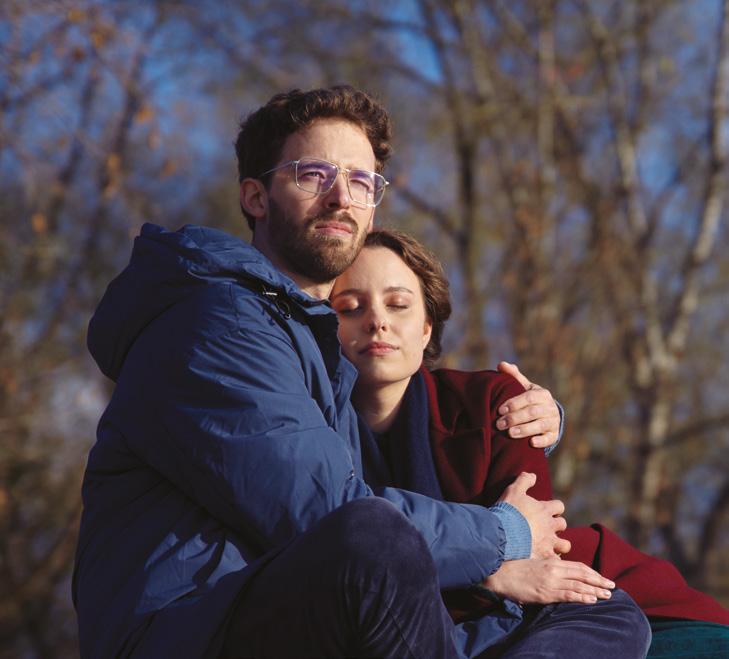
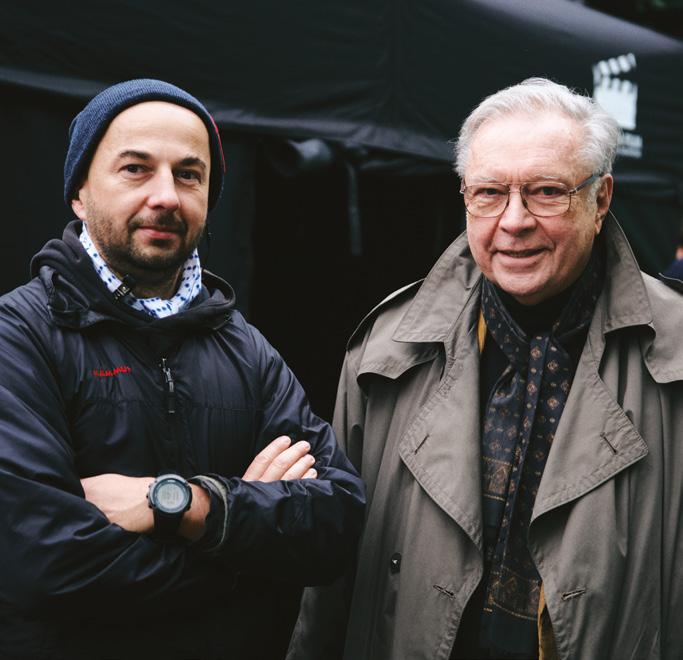
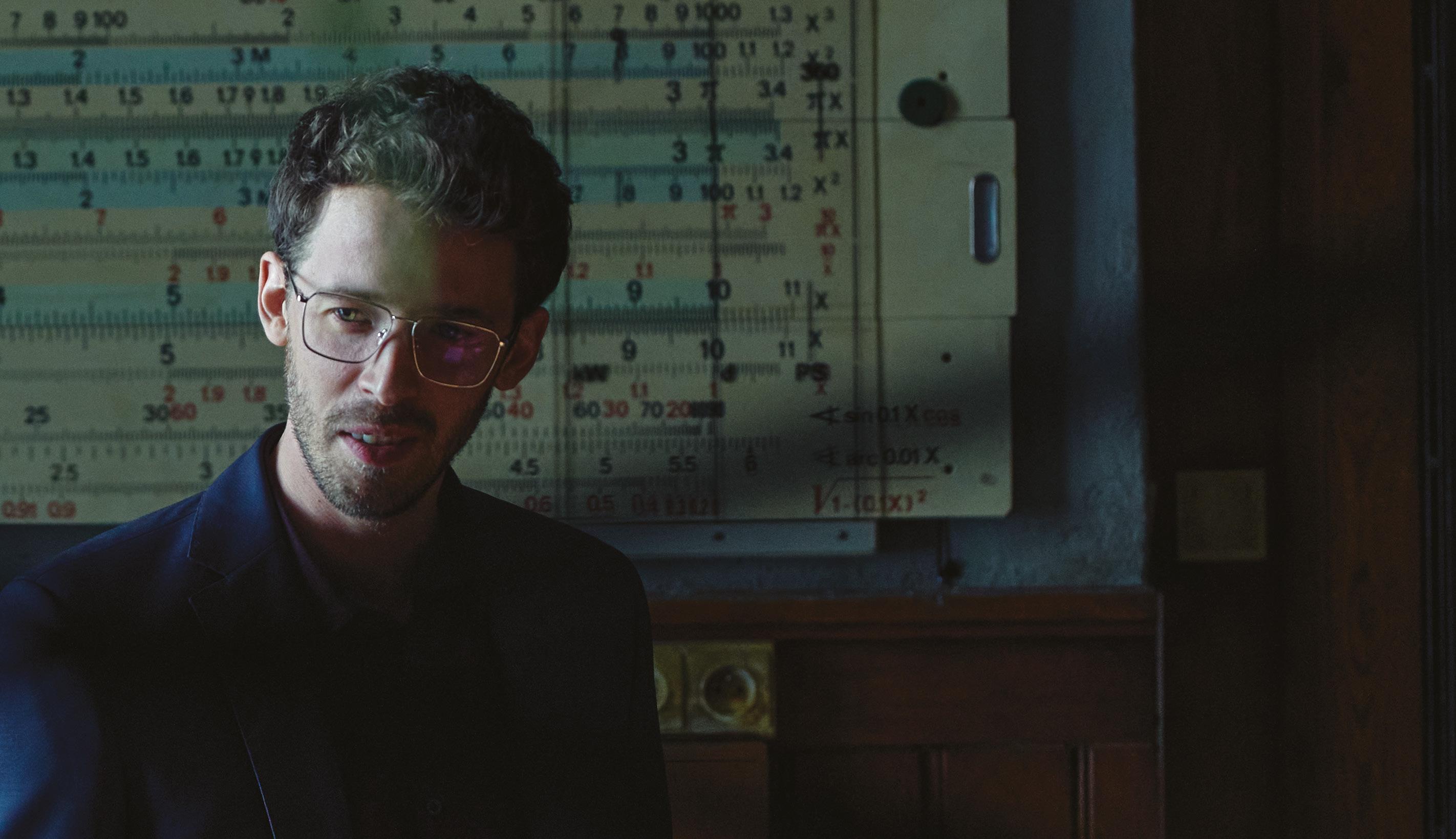
we used them repeatedly in various forms for most of the shoot. We also applied grease to the edges of the ones that were to diffuse the light for specific shots.”
Niemyjski acknowledges that colour was even more important than light.
“As the characters fight over whether there’s life after death, we had to find a clear visual representation for their struggles. Mr. Zanussi wanted to use black in different intensities, but I convinced him to choose purple, the colour that was for centuries associated with emperors, elegance and evanescence. It was partly because it was the most difficult pigment to obtain. Basing the entire lighting scheme on purple as well as supplementary browns, orange or brassy hues in various shades and halftones, gave the film a noble and divine feeling that perfectly resonated with what the characters are talking about and reflecting upon.”
Though both Joachim and David alter their perception of what life, love and mortality are all about, the viewers will not find any plain answers in Krzysztof Zanussi’s new film. It is entirely possible that they may leave the screening none the wiser. But by infusing The Perfect Number with such a range of suggestive, yet subtly introduced visual stimuli, across a string of elegantly cinematic discussions about fate vs. chaos, or God vs. mathematics, plus grainy and highly-symbolic recreations of some kind of historic past, Niemyjski made sure that the script’s intellectual value was not lost in translation.
IT JUST GOT BIGGER
JOINING THE FAMILY: THE FAT-RABBIT AND DOUBLE HEX SNAPBAG
